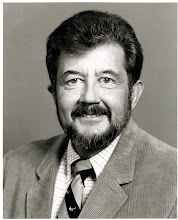When Kiran Bhatraju, a native of Pikeville, Kentucky, and the CEO of renewable-energy company Arcadia Power, heard that a coal company would be converting an old strip mine into a solar farm, he expected huge backlash. But his community's reaction was the opposite.
"The mayor, local politicians and people in coal country are ready and excited about new jobs in the renewables industry," Bhatraju said. "The entire community has been rallying behind the project because it will retrain and put miners back to work."
............................................................................
At one point more than 90 percent of the electric power provided by EKPC was coal-fired. Last year that number was down to about 70 percent, and today the cooperative is in the process of installing a 33,000-panel solar field on its property.[!]
"What we're doing is recognizing customer demand," Comer said. "And not just residential customers but also businesses. When companies are considering areas to locate a plant or facility, they're looking for energy options that are cost-effective and sustainable."
.............................................................................Berkeley Energy Group, the coal company that Bhatraju referenced, announced their plans to build the state's largest solar farm in April, claiming that it would generate jobs for displaced coal workers. That same month, the Kentucky Coal Museum — a physical, standing tribute to the state's coal heritage — had 80 solar panels installed on its roof as a cost-saving measure. The museum's owner expects to save between $8,000 and $10,000 a year.
(Click on figure to enlarge)
But coal mining may not be dead, just a change from energy production to rare earth elements mining:
Hower and his university colleagues, for example, have partnered with the Department of Energy in the research of "rare earth elements," a group of 17 metals that are vital in the production of smartphones, wind turbines, solar panels and dozens of other modern-day technologies.
REEs, which include metals like scandium, yttrium and neodymium, are said to make up a $7 trillion global market, while supporting $500 billion to $600 billion in other industries. The United States imports 90 percent of its REEs from China, which holds a near monopoly over the market. This is despite the presence of 13 million metric tons of rare earth elements within the continental United States, according to the U.S. Geological Survey. Hower said it's too soon to provide an estimate for REE resource potential in Kentucky, specifically.
"REEs can make Kentucky a player," Hower said. "You're not going to displace the entire range of imports from China, but if you could make a dent in it, that can go a long way."
On the city level, Louisville has joined the coalition of cities that will still follow the Paris accord:On the city level, Louisville's government is setting sustainability standards for its residents. Following Trump's withdrawal from the Paris Agreement, the city signed onto "We Are Still In," a coalition of more than 200 cities pledging to uphold the climate accord.
Also see: http://stopcontinentaldrift.blogspot.com/2017/07/parallel-government.html
http://www.cnbc.com/2017/07/18/post-coal-country-kentucky-bets-on-renewable-energy-metals-mining.html


No comments:
Post a Comment